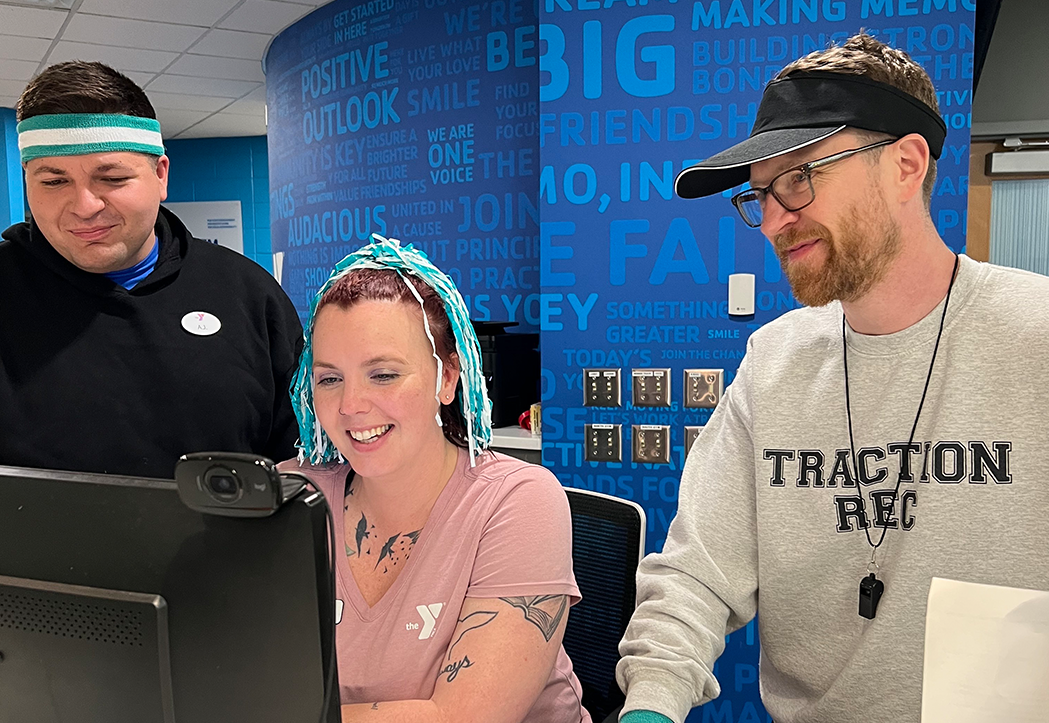If you’ve been asked to lead a CRM (Customer Relationship Management system) evaluation for your organization, you might feel a mix of excitement and overwhelm. The pressure is real: you want to make the right choice, keep your board and executive leadership team confident, and ensure your staff won’t feel buried in change.
Here’s the truth: switching CRMs doesn’t have to be scary. With the right process, and the right partner, it’s manageable, and even energizing for your team. Let's walk you through the steps to evaluate a CRM with confidence.
<center><hr width="50%"></center>
If you’d like some extra help, you can download our free CRM Switch Toolkit, which includes:
- A CRM Readiness Self-Assessment to see where you stand today
- A Vendor Questions Checklist to make sure you ask the right things in demos
- A CRM Project Timeline Template to keep the whole process on track
<center><hr width="50%"></center>
Step 1: Assess your current CRM readiness
Before you look at new technology, pause and ask: Where are we right now? Some signs it may be time for change:
- Staff are stuck with too many workarounds and manual processes
- Reporting and admin takes hours and still doesn’t give clear answers
- Members and customers are frustrated by inconsistent experiences
The CRM Readiness Self-Assessment helps you rate your situation across needs, goals, and decision-making. By the end, you’ll know if your org is ready now, in transition, or stable for now but should keep watch.
Step 2: Define what matters most in a new CRM
Every organization has different priorities, but most nonprofit community centers and recreation organizations share a few common needs:
- Easy, accurate reporting for leadership and funders
- Mobile access for staff in the field and members and customers on the go
- Smooth connections to your other systems (registration, finance, fundraising, child care programs and facility bookings)
- A system that can grow with you, not hold you back
When you take this to your board or leadership, frame it in plain terms: this isn’t just about software. It’s about freeing up staff time and creating better experiences for community members. For more encouragement, check out why replacing your CRM isn’t as hard as you think.
Step 3: Prepare questions to ask CRM partners
A shiny demo can look great, but the real insight comes from the questions you ask. The Vendor Questions Checklist gives you a ready-made list to guide conversations. Some examples include:
- Has this partner worked with YMCAs, JCCs, or Parks & Rec before?
- How do they help us move our data over without stress?
- What training and ongoing support will staff actually receive?
- How often do they improve the product, and are they listening to customer feedback?
- If we outgrow the system or need to move in the future, how easy is it to take our data with us?
Pro tip: Don’t just ask “Can it do this?” ask “How will it help us deliver a better experience for members and staff?”
Step 4: Build a realistic CRM migration timeline
One of the biggest fears we hear is: “This project will take forever.” The reality: with the right partner, a clear plan, and staff engagement, it’s very doable. A typical timeline has three stages:
- Discovery and input: align your team, gather feedback, and define goals (about 4–6 weeks)
- Partner selection: run demos, compare options, and get board approval (about 4–8 weeks)
- Transition planning: move your data, train staff, and launch in phases (many orgs do this in about 120 days)
The CRM Project Timeline Template helps you set milestones, assign roles, and show your executive leadership team that you have a clear, achievable plan.
Step 5: Build buy-in across your team
Even the best CRM will flop if your staff don’t feel included. As the champion, your role is to bring people along. Ways to do that:
- Connect the change to mission impact: “This system will give us more time with members, less time in spreadsheets.”
- Acknowledge fears, but point out the risks of staying put: missed opportunities, tired staff, and frustrated members
- Get input early so staff feel heard and invested in the process
Need ideas on how to position the conversation? See how you can start the CRM conversation with your team.
Step 6: Choose a purpose-built CRM partner
Finally, remember that you’re not just choosing technology. You’re choosing a partner. Generic member and program management systems often mean costly customization, ongoing headaches, and often fall short of needs for future growth. A purpose-built solution like Traction Rec, built on Salesforce, gives you:
- A system already designed for YMCAs, JCCs, and community organizations
- Proven security and reliability from the world’s leading CRM platform
- Workflows and features tailored for memberships, programs, child care, and operations
- Future-ready tools, including automation and AI-driven functionality, so you won’t fall behind
With the right partner, your executive team and staff can feel confident you’re making a smart, sustainable decision.
FAQs about a CRM evaluation
How do I know if it’s time to replace our CRM?
If staff are juggling spreadsheets, community members face clunky experiences, or reporting and admin work drains hours, it’s time to start looking.
How long does a CRM transition take?
Many organizations make the move in about 120 days using a phased approach. Larger orgs may take longer, but a clear plan keeps momentum.
What questions should I ask a CRM partner?
Ask about their experience in your sector, their training and support, and how they’ll help you move data smoothly. Our checklist has 25+ questions to guide you.
What’s included in the CRM Switch Toolkit?
Three resources: a Self-Assessment, a Vendor Questions Checklist, and a Project Timeline Template. All designed for nonprofit community and recreation organizations.
You’ve got this, and we've got you
Evaluating a CRM doesn’t have to be overwhelming. With a clear process, good questions, and a supportive partner, you can guide your organization to a modern system that works for staff, members, and your mission. Download the free CRM Switch Toolkit to take the first step today.
























